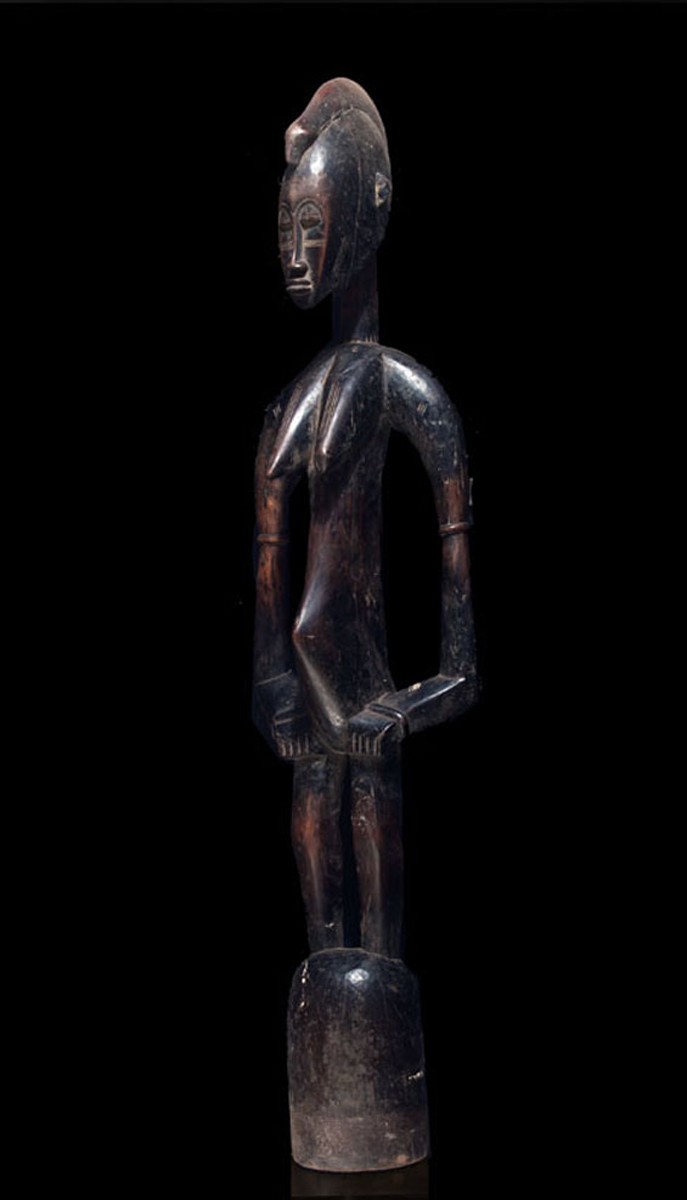 |
A female Senufo Rhythmpounder - déblé - uprising from a cylindrical, base with slightly bent legs, the openwork arms carved beside a slender body with a pointed navel, the hanging breasts in tapering form, a columnar neck supporting an oval head with elongated fascial fascial features, wearing a domed, single crested coiffure, scarification patterns at the upper-arms and closse to the hands; aged heavy and hard wood, a touchpatina with signs of intensive ritual use, blackened to reddish surface, the cylindrical base of the statue with significant signs of erosion by the specific function of the sculpture.
Many of these Rythm Pounders were used like a hammer to open symbolically or more or less directly a hole in the thick adobe wall of a hut, to carry the dead body of a man - it´s a male sculpture - outside for funaral purpose. In the literature is only described the pounding on earth and the swinging over the ground, but not the described function, which is the reason for the desolat conditions of many déblé bases. W.J.
Gottschalk Burkhard, "Senufo, Massa und die Statuen des poro", Glaze Anita J. , "Art and Death in a Senufo Village", Indiana University Press, Bloomington 1981, Goldwater Robert, "Senufo Sculpture from West Africa" - The Museum of Primitive Art New York, 1964
sold
Height: 103 cm
Weight: 8,9 kg |
 photo: tribalartforum.com/ identification no. P2032002.jpg
photo: tribalartforum.com/ identification no. P2032002.jpg |
|